Must-see scenery with rows of “Gassho-Zukuri” houses, an architectural style born from the villager’s wisdom to survive in the snowy climate.
12 tourism audio guides of the Shirakawa-go area
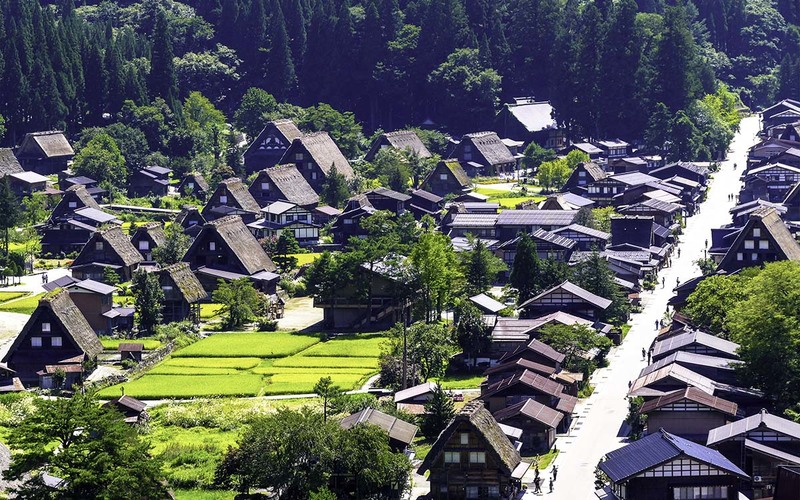
Shirakawa-go Area
There are many homes that incorporate the unique “Gassho-Zukuri” architectural style in Shirakawa-go, and they are designated as World Heritage Sites.
“Gassho-Zukuri” is known for its triangular rafter roof designed to distribute the weight of the heavy snowfall in this region. The word “Gassho” means joining one's hands for prayer.
A unique scenery is created by the houses that are all facing the same direction to endure the harsh winter snow and winds in this mountainous area.
Shirakawa-go was an isolated village deep in the mountains with the geographic disadvantage of narrow agricultural fields.
However, residents used the wide attic spaces of “Gassho-Zukuri” houses for silk farming, which provided valuable supplemental income.
In addition, residents also secretly manufactured gunpowder for wholesale to the shogunate.
This “Gassho-Zukuri” village has a variety of scenery throughout the four seasons, and you can see its entirety from the Observation Deck.
From January to February, the falling snow is lit up at night making visitors forget the cold and enjoy the beautiful atmosphere.
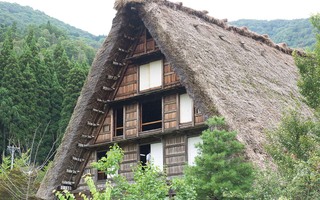
A Myozenji Museum
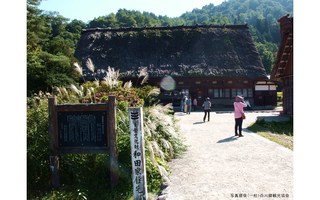
B Wada House
C Nagase House
D Old Toyama-ke Folk Museum
E Kanda House
21-005-08%E7%99%BD%E5%B7%9D%E9%83%B7%E7%94%B0%E5%B3%B6%E5%AE%B6%E9%A4%8A%E8%9A%95%E5%B1%95%E7%A4%BA%E9%A4%A8.jpg)
F Shirakawa-go Tajima House Sericulture Museum
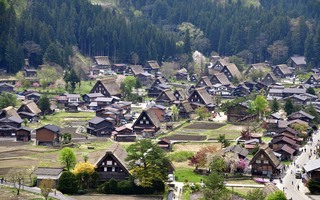
G Ogimachi Castle Observation Deck
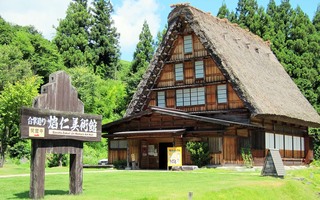
H Jin Homura Art Museum
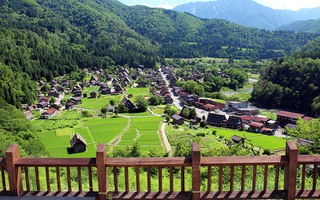
I Tenshukaku Observatory
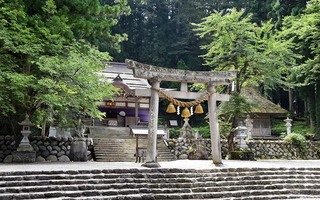
J Shirakawa Hachiman Shrine
A
Myozenji Museum

The Myozenji Museum displays ancient, everyday tools of the region.
The “Gassho-Zukuri” building was built by Takayama's famous carpenter Yosuke Yamamura around the year 1817. At 15 meters tall and five stories high, this is the tallest “Gassho-Zukuri” building in the region, which is also designated as an important cultural property because it was built without using any nails.
This building also has a unique visitors room called “idei”, and there are two more visitor rooms called “kuchi no idei” and “oku no idei,” suggesting there were many visitors.
Local folk items displayed at the museum include cooking utensils, agricultural tools and woodwork furniture. Visitors can clearly imagine the early lifestyles in “Gassho-Zukuri” buildings.
Everyday tools, especially the blackened rice cookers, are left in an extremely good condition.
Visitors can look out over the first floor from the upper stories of the building, and the entire view, including the fireplace creates a nostalgic feeling of a typical family’s everyday life in ancient Japan.
B
Wada House

The Wada House is the largest “Gassho-Zukuri” building in Shirakawa-go, which was built in the middle of the Edo period.
Despite being a 300-year-old house, it is maintained in good condition, and the platform in its entrance is symbolic of the high-status of the Wada family who lived in this house.
The house was designated as an important cultural property of the country in 1995.
The steep thatched roof, with an almost 60-degree tilt creates a large attic space, which was used to install breeding sheds for sericulture, or silk farming, in the Edo period.
On the second floor of the house is an exhibit of rare sericulture tools that are no longer used.
The Wada family is said to have flourished by trading gunpowder, which was an important source of income in Shirakawa-go, while also working as a senior official of guard houses for village chiefs and village borders.
C
Nagase House
The Nagase House is the largest “Gassho-Zukuri” house in the town of Ogimachi.
Its construction began in 1890, and the 11-meter-tall pillar of the five-story building, which stretches through -from the bottom to the top of the roof's slope-, took three years to make.
The Nagase family has continued for 250 years, with their family motto of:
“Love is the treasure of the heart.”
The first three generations were all doctors, and for that reason, the house also exhibits medical equipment used in the Edo period.
The roof replacement of a “Gassho-Zukuri” building is a big event.
Back then, roof replacements happened every 50 years, and villagers formed collaborative groups called “yui” for the undertaking.
In 2001, this event happened at the Nagase House the first time in 80 years, and four 10-ton trucks worth of thatch plants were used.
Local residents and 500 volunteers came together to form a modern-day “yui”, rediscovering personal ties, and confirming the importance of collaboration.
Newly replaced roof is smoked using a fireplace, which makes the thatches resistant to bacteria and insects, and also protects the 500-year old Buddhist altars and lacquer for future generations.
D
Old Toyama-ke Folk Museum
The Old Toyama-ke Folk Museum exhibits cultural artifacts of the Shirakawa village regarding food, clothing, and shelter.
The four-story, moss-covered, rustic “Gassho-Zukuri” building was built in 1827 by carpenters of the Noto region, and the indoor pillar still emits a shine even after 190 years since its completion.
Shirakawa village’s limited agricultural land made it very difficult for second or third sons to establish a branch family to start their own farming business.
Therefore, the eldest son tended to be the most powerful member in a typical large family with more than 20 people.
The first floor, with the most space, was the primary living area. Spatial constraints resulted in unique lifestyles, such as the second and third sons’ wives having to commute to the house where their husbands lived, and children being raised in the homes' of mistresses.
While a large family surrounding a fireplace may seem quite peaceful today, it is said that the lifestyle in these houses were quite chaotic at the time.
E
Kanda House
The Kanda House is an observation facility of the “Gassho-Zukuri” houses built in the late Edo period. The Kanda family started when Sajiemon Wada established a branch family from the Wada family and settled in this area.
This is an extremely rare case as Shirakawa village’s limited farmland made it very difficult for siblings to branch off from the main family tree.
Although Sajiemon was the second son of the Wada family, he changed his last name to Kanda, which means “holy field”, when he formed his branch family. This last name is said to originate from the holy field by the Ubusuna Hachimangu Shrine, located at the region where he built his house.
During the late Edo period, the house was built over ten years by an architect of shrines and temples from Ishikawa Prefecture.
The pine tree beams are superb, with a thickness of 60 centimeters .
The house has a unique middle-floor which was made to accommodate the large family. It is said that domestic assistants and unmarried siblings lived on the middle floor, and a small window was built to monitor the fireplace to prevent fires. As a result, the fireplace still continues to operate in good condition to this day.
You can also taste the wild herb tea brewed on this fireplace.
F
Shirakawa-go Tajima House Sericulture Museum
21-005-08%E7%99%BD%E5%B7%9D%E9%83%B7%E7%94%B0%E5%B3%B6%E5%AE%B6%E9%A4%8A%E8%9A%95%E5%B1%95%E7%A4%BA%E9%A4%A8.jpg)
Because Shirakawa village is a narrow and mountainous farmland with poor soil and heavy snowfall, silk farming, called sericulture, was a precious source of income.
The old Tajima House with its “Gassho-Zukuri” architecture is the only facility that exhibits artifacts related to the sericulture industry, which is no longer active in Shirakawa village today.
Shirakawa village’s silkworm cocoons were known for their high quality, and were traded at a high price. They were even used to weave the famous Nishijin-ori textiles of Kyoto.
“Gassho-Zukuri” architecture creates a large attic space, where residents made the best use of this structural feature by using it for sericulture.
This exhibit reproduces the attic, which was stabilized with bundles of rope, and the placement of the actual tools that were used back then, create a nostalgic ambience.
Videos are also on display that make it easier for visitors to understand the history.
Shirakawa village has established a sericulture restoration project for the future, and as part of that they are now breeding silkworms again.
Depending on the time of visit, visitors can actually see live silkworms eating mulberry leaves.
G
Ogimachi Castle Observation Deck

The Ogimachi Castle Observation Deck overlooks the “Gassho-Zukuri” houses of Shirakawago built in the Ogimachi Castle site.
It is unknown when Ogimachi Castle was built, but it is known that Kaeri Kumo Castle was constructed in its vicinity around the year 1462.
Ogimachi Castle did not have a castle tower, so there are very few remnants of the castle aside from the earthworks and small trenches.
It may look more like a mountain top than a castle site, but the view from the Observation Deck looks like a scene from the world of folktales.
It is also a popular photo spot as it overlooks the “Gassho-Zukuri” houses in every season, including views of its greenery, the autumn leaves, and covered in snowfall.
H
Jin Homura Art Museum

Jin Homura Art Museum, which has “Gassho-Zukuri” architecture, is a contemporary art museum exhibiting approximately 50 works of Jin Homura, an artist known for using vivid colors to illustrate the intersection between societal matters and various artistic themes.
The museum was established when Homura, who opened a studio in Shirakawago and used it for his artistic activities for about 20 years, donated the building and his works to the village.
The main distinguishing feature of this museum is the contrast between the contemporary art pieces and the traditional “Gassho-Zukuri” architecture. It is worth noting that Homura’s works, which are characterized by a flaming, multi-dimensional and dynamic touch, was inspired by this “Gassho-Zukuri” house.
Born in Shizuoka Prefecture in 1948, Homura studied at the University of Paris, was exposed to the world of art, and later held a solo exhibit in various cities including Copenhagen.
In 2002, he organized the first Shirakawago Art Festival. Later, this event was designated as a World Cultural Heritage, and became a global art festival.
The museum is a precious place with a rustic ambience where you can appreciate the passionate work that Homura created there.
I
Tenshukaku Observatory

The Tenshukaku Observatory, which overlooks Ogimachi village, is located in the village of Shirakawa-go where “Gassho-Zukuri” houses are clustered together.
It is near to a restaurant called “Tenshukaku”, but you don't have to buy food to enter the observatory.
The scenery from this is observatory looks like a birds-eye-view of the Shirakawa-go and Ogimachi villages, and frequently used on local pamphlets and guide books.
This region is characterized by the fact that all the “Gassho-Zukuri” houses are facing the same direction to avoid wind and snow damage.
The landscape, with rows of steeply sloping roofs, is also unique to Shirakawa-go as such roofs don’t require shoveling.
These houses are lit up during the snowy season of January and February, which turns a village, that was once known for its harsh living environment, into a beautiful atmosphere that fascinates many visitors.
J
Shirakawa Hachiman Shrine

Shirakawa Hachiman Shrine is located behind the “Gassho-Zukuri” houses.
It is said that the shrine was founded in the early 700s.
In addition to dedicating unrefined, home‐brewed “Doburoku” sake to the gods, the shrine also dedicates the "Shirakawa village Lion Dance" and the "Shirakawa village Harukoma Dance," which are designated as Gifu Prefecture’s intangible folk cultural assets.
There is a large cedar tree on the premise, which is designated as the village’s natural treasure where you can enjoy the sacred atmosphere. The towering tree's height is 30 meters, the circumference of its trunk is 5.6 meters, and its age is between 200 to 300 years old.
Next to the large Torii gate on its right, the tree has a very majestic presence.
Interestingly, Shirakawa Hachiman Shrine is also known as the model for a shrine that appears in a famous animation. Inside the shrine, there is an overwhelming number of wooden plaques called 'Ema' that fans have left with illustrations related to the animation, showing the large number of fans who have visited this shrine.